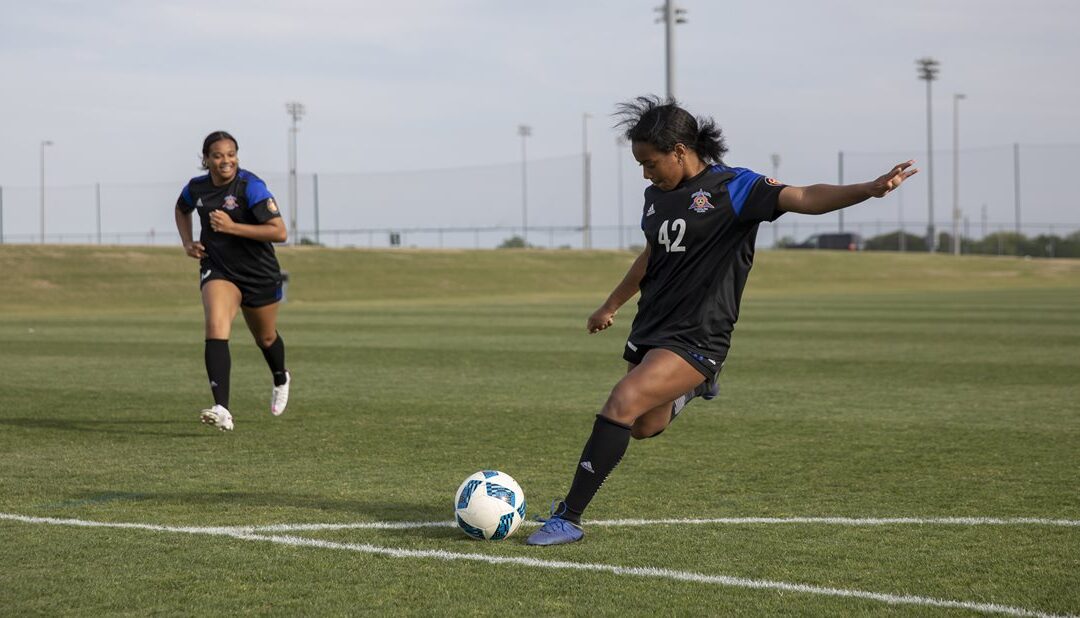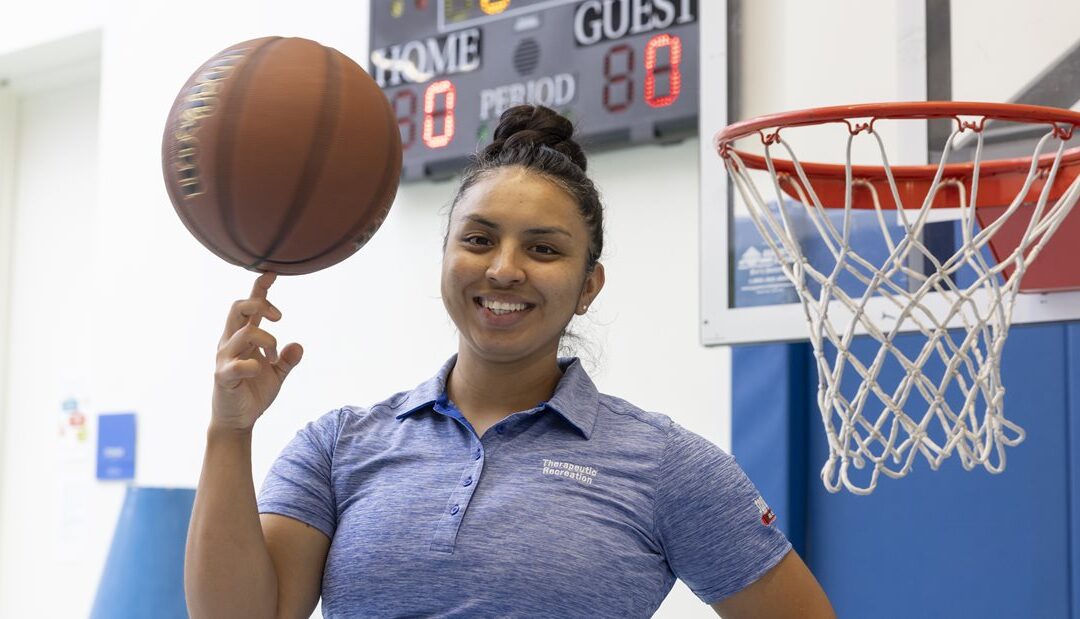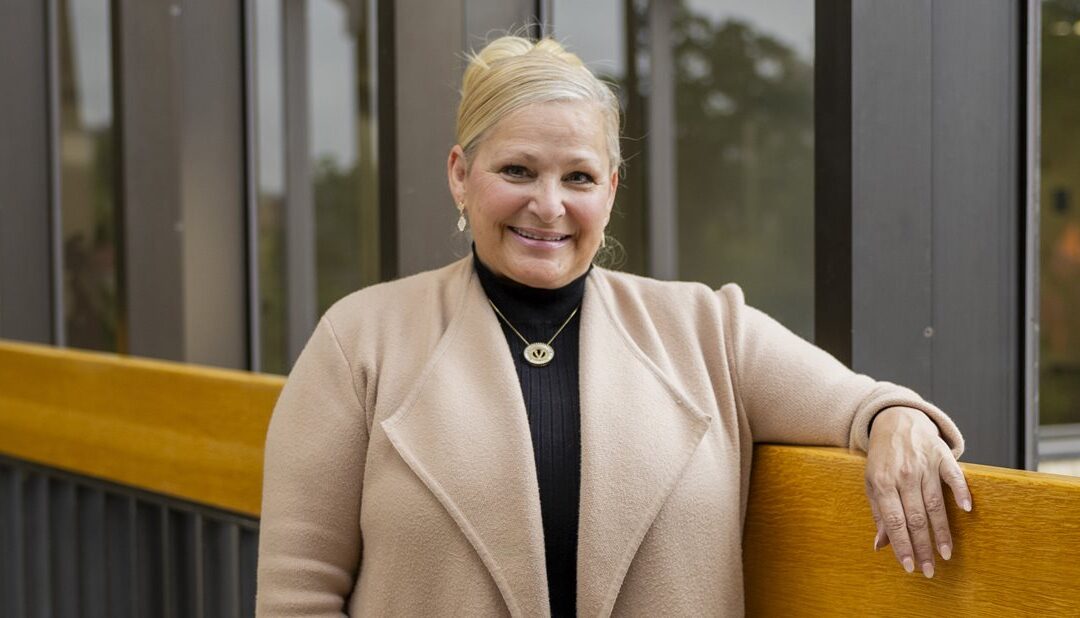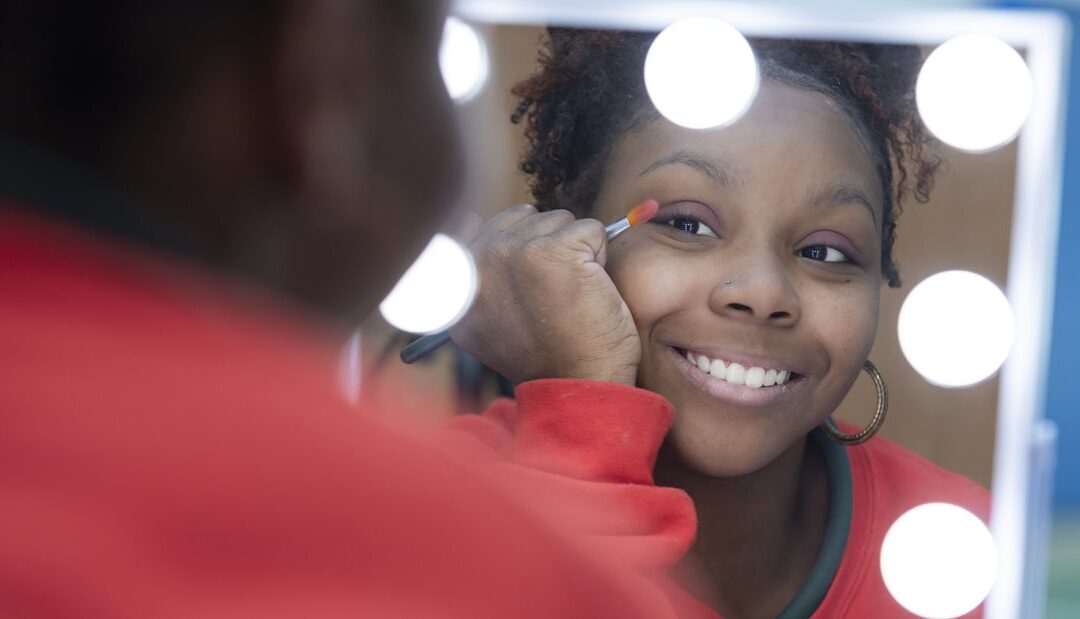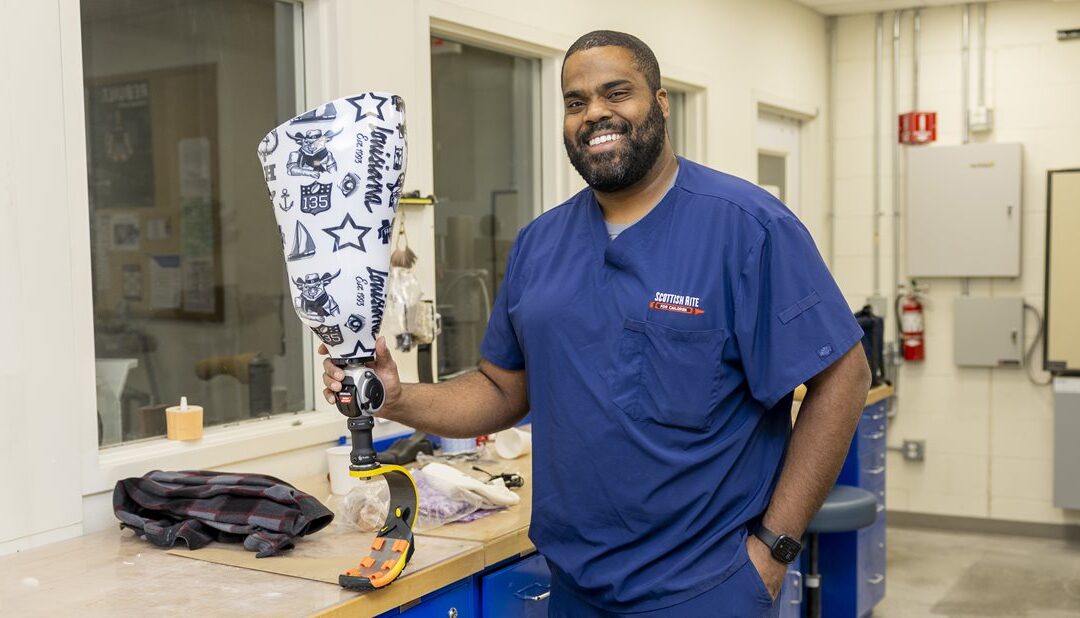What is your job title/your role at Scottish Rite for Children?
I am a certified therapeutic recreation specialist (CTRS). I assist inpatient and outpatient children with their recreation, leisure, goals and interests. I provide them with resourceful recreation activities in their home, school and community that can be adapted for their needs and goals. Resources include sports, swimming, camps, dance and more. I may also coach a child on any specific sport. We can do one-on-one sessions, so I can teach them how to participate in sports and eventually send them on their own to participate in their chosen sport independently.
I am also a camp director for Camp Joint Adventure, the recreation therapeutic specialist for Camp TLC, a support staff member for Spina Bifida Hispanic Family Camp and a coordinator for Tennis All Stars.
What do you do on a daily basis or what sort of duties do you have at work?
I facilitate and coordinate recreation therapy groups for inpatient patients who benefit from therapeutic recreation. We use the solarium, tennis courts, James F. Chambers, Jr. Youth Fitness Park and Allan Shivers Park and Lee Drain Children’s Courtyard. Activities consist of sports, physical activity, cognitive skill building, social interaction and leisure involvement! I host one-on-one sessions for children who may not leave their room due to being bedbound or needing weight management.
For the spina bifida clinic, I visit the children for the following reasons:
- Periodicity in children ranging from 3-year-olds to 6-year-olds
- An introduction to therapeutic recreation
- Weight management
- Increase of physical activity
- Increase knowledge of adaptive leisure involvement
- Adaptive bike riding
- Camp resources
I work at the spina bifida clinic twice a week, and I love it!
What was your first job? What path did you take to get here or what led you to Scottish Rite?
My first job was at a behavioral hospital. I volunteered at River Crest Hospital in San Angelo, TX, while I had a 1-year-old toddler and attended graduate school for two months. This was the only way to get experience in my field of work, therapeutic recreation, in that city. A position opened, and I became a paid employee at this hospital. Shortly after, my husband got a job offer in Arlington, TX, and we had to move. I was able to transfer from River Crest Hospital to Millwood Hospital; these are sister hospitals for United Health Care. During my time in Arlington, I saw a commercial on television about Scottish Rite, and it immediately caught my attention because my career dream has always been to work with children with disabilities. I grew up with a cousin with cerebral palsy, who was very dear to me and passed away at 16-years-old.
Right away, I found the Scottish Rite number, called, asked to be transferred to the Therapeutic Recreation department and got the chance to speak with the director of therapeutic recreation Dana Dempsey! I asked if we could meet to speak about Scottish Rite and therapeutic recreation for learning purposes. Dana gave me a tour, and it is safe to say that I was in love! I stayed in touch with Dana and hoped that one day our paths would cross again after I received my certification and built more experience in our field.
I continued my graduate work remotely when we moved to Arlington. A year later, I finished graduate school with a Masters in Coaching, Sports, Recreation and Fitness Administration, walked the stage while being pregnant with my second child and passed my exam to become a CTRS. After I became a CTRS, I began to apply for better paying jobs to help support my little family, as my husband was also establishing himself as a basketball coach and teacher. I worked as a therapeutic recreation director at another sister hospital at Mesilla Valley Hospital for two years. Then, a full-time position opened at Scottish Rite. I applied, went on more interviews and got blessed with the opportunity to be a full time CTRS at my dream job: the Therapeutic Recreation department at Scottish Rite for Children in Dallas.
What do you enjoy most about Scottish Rite?
I enjoy being the one to say “yes, you can participate in sport and recreation” to a child who thought that their diagnosis was going to keep them from enjoying their childhood through sports. I also love the hope I can offer to the parents who thought their child may never be able to ride a bike or play in a team sport.
Tell us something about your job that others might not already know?
Therapeutic recreation offers physical well-being, knowledge of adaptive sports, inclusion and services as a coping skill for psychological well-being. Recreation and leisure involvement can be used as a tool to help balance negative moods, decrease symptoms of depression, anxiety or any other mental illness.
Where is the most interesting place you’ve been?
I went to a military school at New Mexico Military Institute. I was on the Ranger School as an Army Ranger! It was just for fun and not a training for the real Army. One week, we went to do a land navigation project. We stayed out in the middle of a desert in New Mexico, and it was dark and cold. However, the stars were amazing, like the Milky Way. I love the outdoors the desert; this location has been the most beautiful and interesting place I have ever been.
What is your favorite game or sport to watch and play?
I love playing soccer and love watching Family Feud!
If you could go back in time, what year would you travel to?
The year 2000. I was 8-year-olds, with no real responsibilities other than family time, playing soccer, going to school and enjoying my mother’s homemade Mexican food at our trailer park in New Mexico!
What’s one fun fact about yourself?
I can spin a basketball on my finger for two to five minutes straight and can hip thrust up to 400 lbs.
